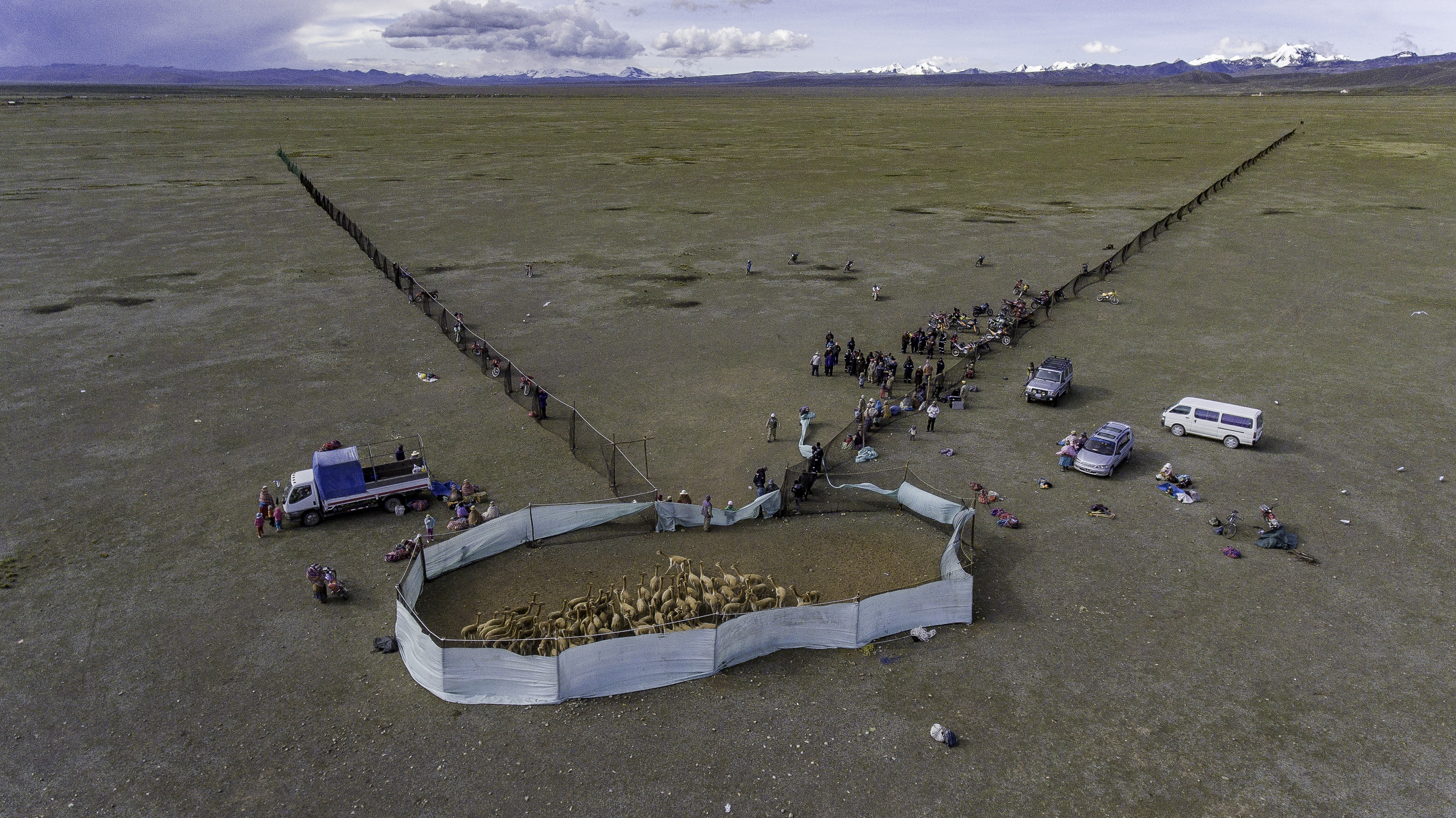Monitoreo y vigilancia del estado de las poblaciones y de la salud de vicuñas
Obtención de muestras de vicuñas para estudios de salud
Rob Wallace WCS
El monitoreo de las poblaciones de vicuña, realizado en 2006, 2018, 2019 y 2021, evaluando la sarna sarcóptica y otros parásitos en Apolobamba, estableció que la especie mantiene su ratio de incremento poblacional, y que en su mayoría los individuos son saludables. Las prevalencias de sarna son bajas y afectan principalmente a las vicuñas crías y las de mayor edad con una menor condición corporal. Esta enfermedad es actualmente endémica y con bajo impacto, siempre y cuando las vicuñas cuenten con suficiente alimento para mantener una buena condición corporal. Por otro lado, debido al incremento de las actividades mineras, de 50 a 231 en los últimos 10 años, y el uso aproximado de hasta 6 kg/mes de mercurio por cada actividad, ya existe evidencia de contaminación en la especie. Esto se ha verificado mediante registros de mercurio total en sangre de vicuñas, así como en anomalías celulares (genotoxicidad), y representa una amenaza local para la salud humana y de animales silvestres y domésticos.
- Apoyo de comunidades manejadoras de vicuñas de Apolobamba.
- Apoyo del área protegida SERNAP Apolobamba.
- Financiamiento necesario para apoyar la logística de actividades de campo con los comunarios y guardaparques.
- Se cuenta con laboratorio y veterinarios parasitólogos, lo que permite reducir costos de análisis a traves del tiempo.
- Se cuenta con acuerdos con instituciones científicas académicas como el Instituto de Ecología y el Instituto de Biología Molecular y Biotecnología, ambos de la Universidad Mayor de San Andrés.
- Todos los resultados de investigación que se obtienen son socializados y entregados a las comunidades y al área protegida SERNAP Apolobamba.
- Los estudios realizados son insumos para la gestión de las comunidades y del área protegida y son oportunidades para el desarrollo de investigaciones de tesis de estudiantes de licenciatura y grados superiores.
- Todas las pruebas serológicas de laboratorio requieren estar previamente validadas para especies silvestres con las que se trabaja.
